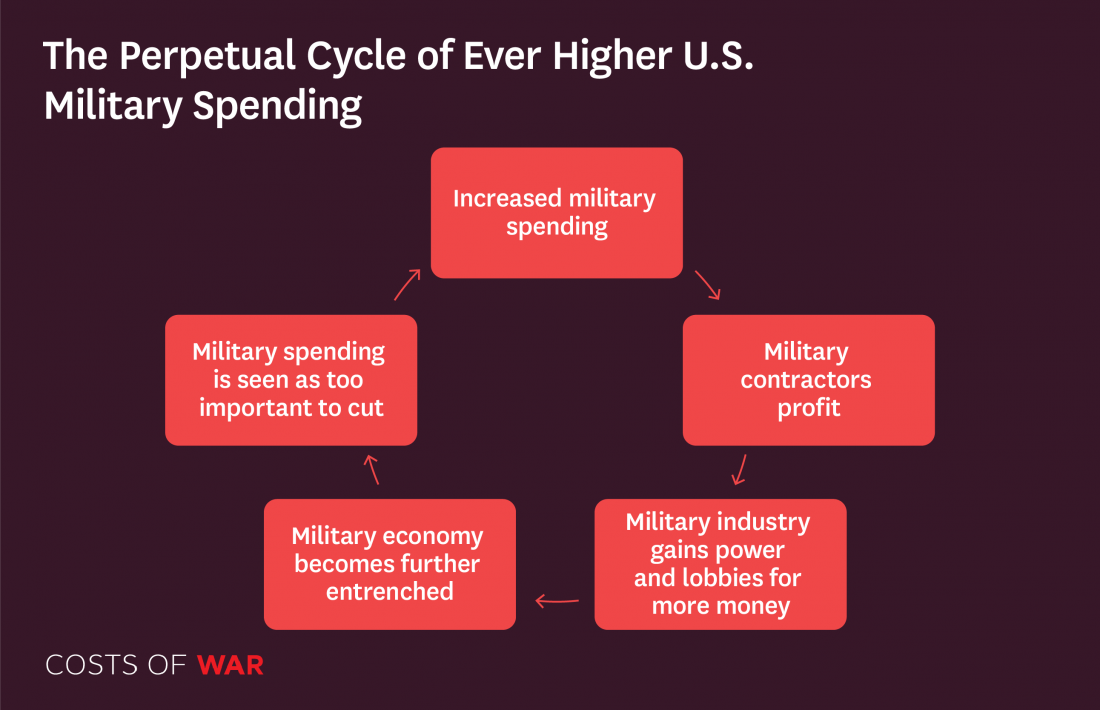U.S. Economy

The Iraq and Afghanistan wars have contributed to significant economic setbacks in the United States, through lost opportunities for investment in public infrastructure and services and higher borrowing rates. Contrary to the widespread belief that war is a particularly effective way to create jobs, U.S. federal spending on the current wars would have led to at least 1.4 million more jobs had the money been invested instead in education, health care or green energy.
Similarly, the hundreds of billions of dollars invested in military assets such as ships and aircraft during the first decade of the wars would have led to larger capital improvements had these dollars instead been invested in core public economic infrastructure, such as roads and water systems.
The wars have also impacted interest rates charged to borrowers by banks and other creditors. This is the result of war spending financed entirely by debt, which has contributed to a higher ratio of national debt to Gross Domestic Product (GDP) and subsequent rising long-term interest rates.
Each of these issues can be counted as a significant cost of the post-9/11 wars.
Key Findings
-
War spending created fewer jobs than similar spending investment in clean energy, public education and health care.
-
Federal investment in military assets during the wars made for a lost opportunity to significantly boost capital improvements in core infrastructure such as roads and public transit.
- War spending financed entirely by debt has contributed to higher interest rates charged to borrowers such as new homeowners.
(Page updated as of September 2023)

